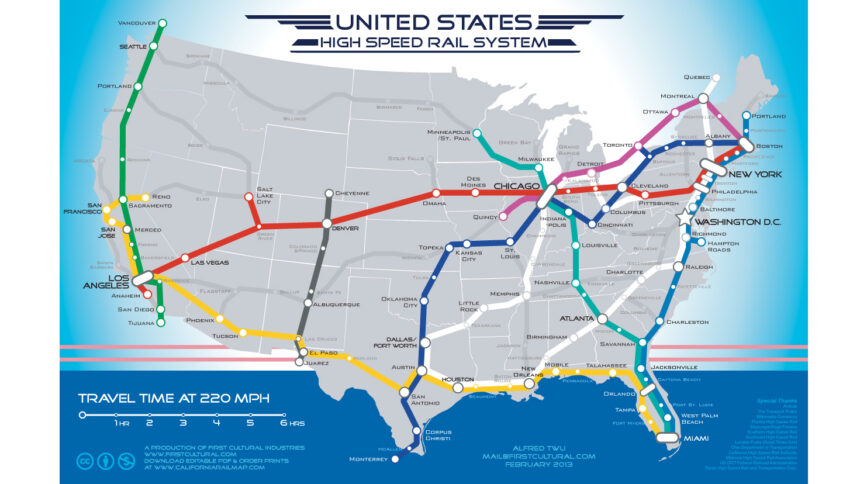US High-Speed Rail: A New Era on the Horizon?
The United States, home to over 340 million people and countless transportation options, still lacks a high-speed railway system. However, with two major projects currently underway, the question arises: Is the nation finally moving towards a rail network comparable to those in China, Japan, and Europe?
Rick Harnish, a representative from the High Speed Rail Alliance, expressed optimism about the two prominent projects: the California high-speed rail connecting San Francisco and Los Angeles, and the Las Vegas to Los Angeles line. Harnish pointed out the complexities involved in building the California route, given its mountainous terrain, while noting the relative ease of the flat Las Vegas corridor.
Plans are also in the pipeline for high-speed connections from Portland, Oregon to Seattle, Washington, extending into Vancouver, Canada, and another line linking Dallas and Houston. While there are strides being made, Harnish cautioned that progress on the Portland to Seattle line is sluggish and that the Texas line’s future is uncertain due to the cancellation of a significant federal grant under the previous administration.
A Global Perspective
In stark contrast to the US, China boasts an extensive high-speed rail (HSR) network that is expected to surpass 50,000 kilometers (31,000 miles) by the end of 2023. The European Union is not far behind, with 8,556 kilometers of HSR lines, led by Spain’s robust network. In the UK, High Speed 1 remains the solitary high-speed connection, though work continues on the troubled High Speed 2 project.
The definition of high-speed rail is subjective, but the International Union of Railways generally classifies trains operating over 250 km/h (155 mph) as HSR. The US’s reluctance to adopt this mode of transportation broadly can be attributed to a strong car culture and a lack of investment in rail infrastructure, as noted by rail journalist Will Doig.
Challenges in Implementation
Adding to the hurdles, Amtrak, the government-owned passenger train service, recently witnessed the resignation of its CEO Stephen Gardner amidst reported political pressure. Currently, Amtrak does not provide high-speed services. However, later this year, the company plans to introduce 28 NextGen Acela trains, operating at 160 mph on its Northeast Corridor. Unfortunately, only a fraction of this route allows speeds exceeding 150 mph.
| Country | High-Speed Rail Length (km) |
|---|---|
| China | 50,000+ |
| European Union | 8,556 |
| Spain | 3,190 |
| UK | 68 (High Speed 1) |
Looking Ahead
Efforts to expand high-speed rail in the U.S. face additional hurdles, including political opposition and urban planning challenges. Amtrak’s push for high-speed services is hampered by inadequate funding and a complex federal landscape. It’s essential for federal involvement to make successful high-speed rail a reality.
As highlighted by Scott Sherin, an executive with French train manufacturer Alstom, any new high-speed lines will encounter obstacles in urban environments where infrastructure is dense. The prospect of international partnerships, especially with China, remains politically sensitive but could offer a pathway to developing a world-class high-speed network in the U.S.
With the advancement of high-speed rail in neighboring countries and ongoing discussions in America, the future holds potential, but significant changes in attitude towards public transportation will be crucial for progress.

